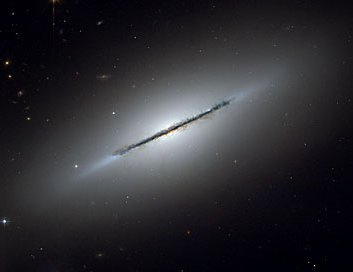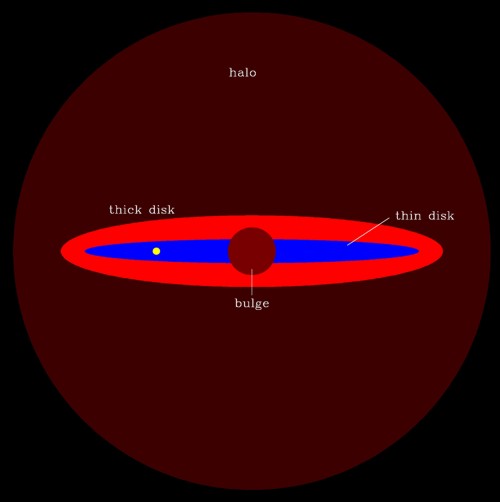disk (astronomy)

Figure 1. The disk galaxy NGC 5866, seen nearly edge-on. Credit: NASA, ESA, and The Hubble Heritage Team STScI/AURA.

Figure 2. Stellar populations. Credit: University of Hertfordshire.
In astronomy, the term "disk" may be applied to a flattened, circular region of gas, dust, and/or stars. It may refer to material surrounding a newly-formed star (see protoplanetary disk), material accreting onto a black hole or neutron star (accretion disk), or the large region of a spiral galaxy containing the spiral arms.
A disk is also the apparent circular shape of the Sun, a planet, or the Moon when seen in the sky or through a telescope.
Disk galaxy
A disk galaxy is a galaxy with a prominent wide, thin disk of stars (see Figure 1). This description applies to spiral galaxies (including barred spirals) and lenticular galaxies, but not to elliptical galaxies, dwarf spheroidals, and some peculiar galaxies.
Disk star
So-called thin disk stars, such as the Sun or Alpha Centauri, lie at a typical distance of about 1,000 light-years from the galactic midplane. Thick disk stars, on the other hand, such as Lalande 21185, tend to have higher velocities out of the galactic plane and lie at an average distance of about 3,500 light-years from the midplane (Figure 2).
Beyond the limits of the Galaxy's thick disk is the galactic halo.


